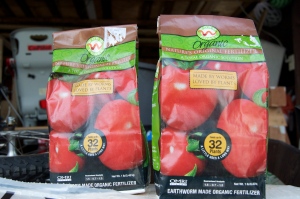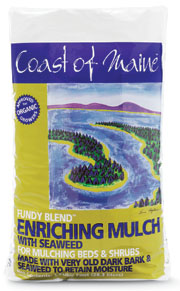It’s only been three days, and I have already suspected our small flock of pecking and cannibalism, mites, Marek’s Disease, and botulism—all of which have been in my head. However, my anxiety is not without merit.
When our flock arrived on Saturday the Araucana, or Easter Egger, Flora, was immediately our favorite. She was gentle and sweet. She would let us hold and pet her, not either run away squawking or flap her wings in our faces like her more extroverted pen mates. Well, it turns out there was a reason for her docility. I noticed right away that she seemed more lethargic than the other hens, sat down a lot, and seemed to move with a slow, unsteady gait. Her condition worsened over the next two days to the point where she could only waddle a few steps before falling, once down the ramp from the coop to the run, and then sit with her legs splayed. She wouldn’t eat or drink, even though I gave her a food and water bowl within reach. When we tried to pick her up she would spread her wings and use that momentum to hobble out of reach, and then flop to the ground, immobile. It was difficult to watch.
I did some research, and she had symptoms of Marek’s disease, a deadly virus that causes paralysis and death, so I isolated her from the other hens, just in case. I called the farmer, who said all his chicks had been innoculated against Marek’s, but suggested I contact the state vet’s office. It turns out that Maine has a poultry technician whose job it is to answer just these types of inquiries. Tom Nelson was both kind and helpful, but honest. While he said it did not sound like Marek’s since she wasn’t fully paralyzed and had been vaccinated against the disease, he said it sounded terminal, and the best course of action would be to return her to the farm, where should would most certainly be euthanized, and get a new hen.
This sounded like cold and removed advice to me at first, and then I realized that, while we had already grown attached to Flora, we had only had her for three days, and the farmer should just exchange her for a healthy bird. Not only did the farmer consent to this, but he did some research himself, and it turns out that Araucanas, a true South American breed, were cross bred to create Easter Eggers, and in this breeding, a genetic neurological condition was born, and most likely, Flora had it. So we brought her back, and got this one instead. Meet Millie:
She’s the one with the beard.
I am wracked with chicken mommy guilt about this decision. Upon even further research on my part, I discovered that these conditions are sometimes caused by vitamin deficiencies, and are completely curable. On the other hand, I couldn’t take that chance. If she was contagious, all I had was a hastily constructed shelter for her, in which should would have to remain until she either improved or died, and I didn’t want to watch that demise. She would also either be ostracized from the flock upon reintroduction if she recovered, or bullied and pecked on if she was still weak and we allowed her to re-assimilate. Marek’s is really only determined in necropsy, and we don’t have the time to wait for that diagnosis. The farmer did ask us if we wanted to keep her and try to rehabilitate her. We said no. It wasn’t worth the risk.
We have been honest with Alistair throughout this process. We told her Flora was sick and would most likely have to return to the farm. He was upset, but didn’t ask a lot of questions. He pet her head and whispered through her pen that he wanted her to get better. He actually fell asleep on the way to the farm for the exchange and missed his chance to say goodbye to Flora and meet our new hen, which he initially wanted to call Flora Two. When we got home, he woke up, and I asked him if he wanted to meet our new girl. He said yes, and that he wanted to name her Millie. Done. However, since then, he has seemed less interested in the chickens, like he’s afraid if he gets too attached, one might leave again. He didn’t even tell his classmates at school about them.
I am happy to report that Millie seems much healthier and has assimilated well into the flock. She is a little fireball with a voracious appetite. We are still grieving for Flora, but love Millie already. Alistair got to pet her tonight, and formally welcome her home.
Also tonight, though, Nate noticed some bloody tail feathers on Lady, the Red Sexlink. This could mean a number of things, including pecking and cannibalism, though none of our hens has seemed particularly aggressive or determinedly alpha yet. Just in case, though, all three of us went into the run, gloved and armed with wound salve, to examine not only Lady, but the other three hens. Alistair guarded the door to prevent escape, particularly Mavis’s (She’s not black and white for nothing …), while Nate caught the hens and I checked their rumps and wings. All of them have healthy follicles, some with fewer feathers (Millie’s whole back is basically bald), but none with scaly or scabby patches. Lady did have a small patch of bloody follicles, which she most likely did to herself with her beak because new feathers itch. In the absence of Blu Kote, which is recommended for antibiotic and anti-fungal wound treatment, as well as a deterrent to further pecking, we used Neosporin and talc, which seemed to annoy but not hurt her. Hopefully this is a one-time occurrence and not an epidemic. If it IS pecking among the flock, then it is most likely caused by boredom, being confined to the run all day (mobile run is under construction), so I bought them a toy today, and we are putting up a roost in the run tomorrow. I also bought some spray to treat and prevent mites, just in case.
And Alistair has learned his first lesson in loss. Yes, his acquaintance with Flora was brief, but she was one of his first pets, and this is how it turned out. He has still been relatively quiet about it all, but seems to be warming up to Millie. I am hoping for another favorite.






















